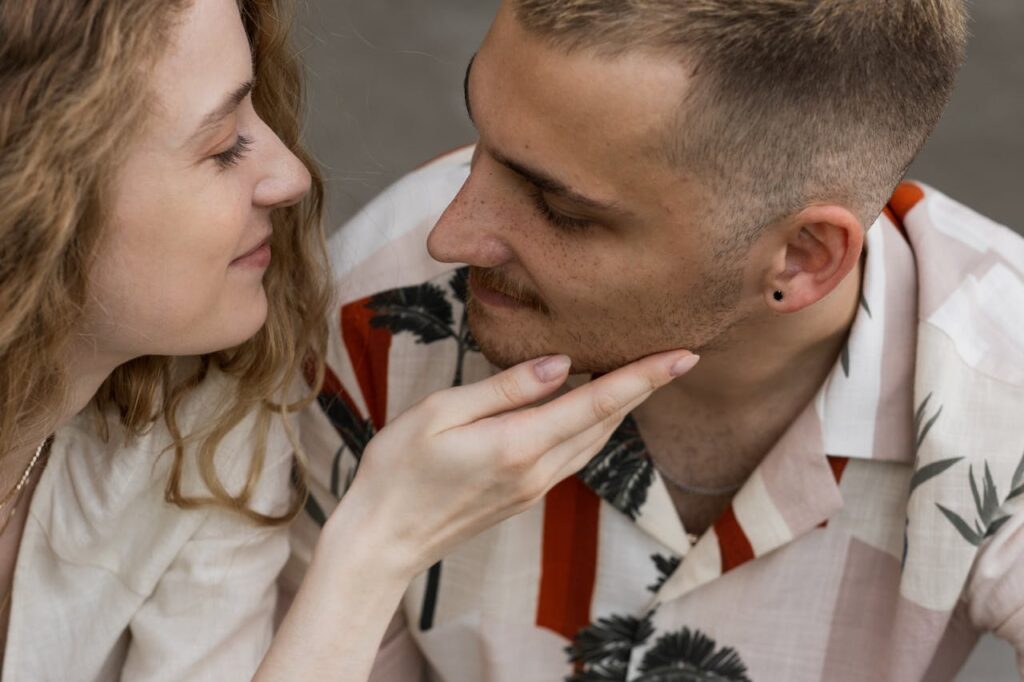यौन स्वास्थ्य के सभी पहलुओं के लिए व्यापक जानकारी प्राप्त करें और अपने यौन कल्याण को सशक्त बनाने के लिए संसाधन और मार्गदर्शन खोजें।
Painful erections never indicate normalcy, and sometimes signal a medical emergency. Severe pain may necessitate…
यौन स्वास्थ्य के सभी पहलुओं के लिए व्यापक जानकारी प्राप्त करें और अपने यौन कल्याण को सशक्त बनाने के लिए संसाधन और मार्गदर्शन खोजें।
Painful erections never indicate normalcy, and sometimes signal a medical emergency. Severe pain may necessitate…
Erectile dysfunction (ED) is a condition that many men face at some point in their…
Erectile dysfunction (ED) is a common condition that affects men of all ages, impacting their…
Feeling nervous about sexual performance, known as Sexual Performance Anxiety (SPA), is pretty common. But…
Erectile dysfunction (ED) is a condition that affects many men worldwide, leading to significant stress,…
The International Society for the Study of Women’s Sexual Health describes Hypoactive sexual desire disorder…
Assertiveness is a crucial skill that enhances communication, reduces stress, and promotes self-confidence. It enables…
Attraction often communicates itself through non-verbal cues, known as body language.
If you find these fundamental attraction questions challenging, you are not alone.
Is she attracted to you?
Does he like you?
Why didn’t they call?
Body language equips you with the tools to determine where you stand. By understanding these signals, you can identify when someone is interested in you.
विषयसूची
विषयसूचीTo understand contemporary nonverbal cues of attraction, examining the origins of our body language is insightful. Our Stone Age ancestors employed the same body language that we utilize today.
The following are the messages we aim to convey to potential mates through our body language, along with what is considered attractive:
I’m open
I am harmless
I’m interested
I am friendly
I’m fertile

Common signs that someone is attracted to you include:
One of the most significant indicators of attraction is prolonged eye contact. When someone is attracted to you, they are likely to make frequent and sustained eye contact. This non-verbal cue suggests interest and attentiveness.
Facial expressions can reveal a lot about someone’s feelings. When a person is attracted to you, their facial expressions often become more animated and expressive.
People tend to reduce the physical distance between themselves and those they find attractive. This can be a clear sign of interest.
Touch is a powerful form of non-verbal communication. Subtle touches can signal attraction and a desire to connect more intimately.
Gestures and posture can also provide clues about someone’s feelings of attraction.
When someone is attracted to you, they might display signs of nervousness or engage in preening behaviors to make themselves more appealing.
Changes in voice pitch and tone can also signify attraction. People often alter their vocal characteristics when speaking to someone they find attractive.
When we choose someone as a potential mate, our body automatically undergoes physical changes to attract them. For instance, our cheeks flush, appearing excited. Additionally, our lips swell, suggesting increased fertility, and we release pheromones to attract the other person. Moreover, from a body language perspective, we can consciously do a few things to attract a potential mate.
Leaning toward someone is a nonverbal way of expressing engagement. This technique is particularly effective in a group setting when you’re interested in a specific person. By leaning toward them, you subconsciously draw them closer, indicating your interest.
Tilting your head signifies interest and attentiveness. When engaged in a conversation, convey your openness and interest by tilting your head and maintaining eye contact. Avoid looking over their head or around the room, as this signals a lack of interest and sensitivity.
Related: Body Language: What Do Crossed Arms Actually Mean?
Recognizing body language signs of attraction helps you understand someone’s feelings towards you. By paying attention to eye contact, facial expressions, physical proximity, touch, gestures, nervousness, and voice modulation, you gain insights into their level of interest. Understanding these non-verbal cues enhances your social interactions and helps you respond appropriately to others’ feelings.
एमबीबीएस और एमडी डिग्री वाली मेडिकल डॉक्टर डॉ. निष्ठा पोषण और कल्याण के प्रति गहरी रुचि रखती हैं। शारीरिक और मानसिक स्वास्थ्य के साथ महत्वपूर्ण संघर्षों से भरी उनकी व्यक्तिगत यात्रा ने उन्हें अनगिनत व्यक्तियों के सामने आने वाली चुनौतियों के प्रति एक अद्वितीय सहानुभूति और अंतर्दृष्टि प्रदान की है। अपने स्वयं के अनुभवों से प्रेरित होकर, वह व्यावहारिक, साक्ष्य-समर्थित मार्गदर्शन प्रदान करने के लिए अपनी पृष्ठभूमि का लाभ उठाती है, जिससे दूसरों को समग्र कल्याण प्राप्त करने के रास्ते पर सशक्त बनाया जा सके। डॉ. निष्ठा वास्तव में मन और शरीर के अंतर्संबंध में विश्वास करती हैं। वह जीवन में संतुलन और खुशी प्राप्त करने की दिशा में एक महत्वपूर्ण कदम के रूप में इस संबंध को समझने के महत्व पर जोर देती है।

